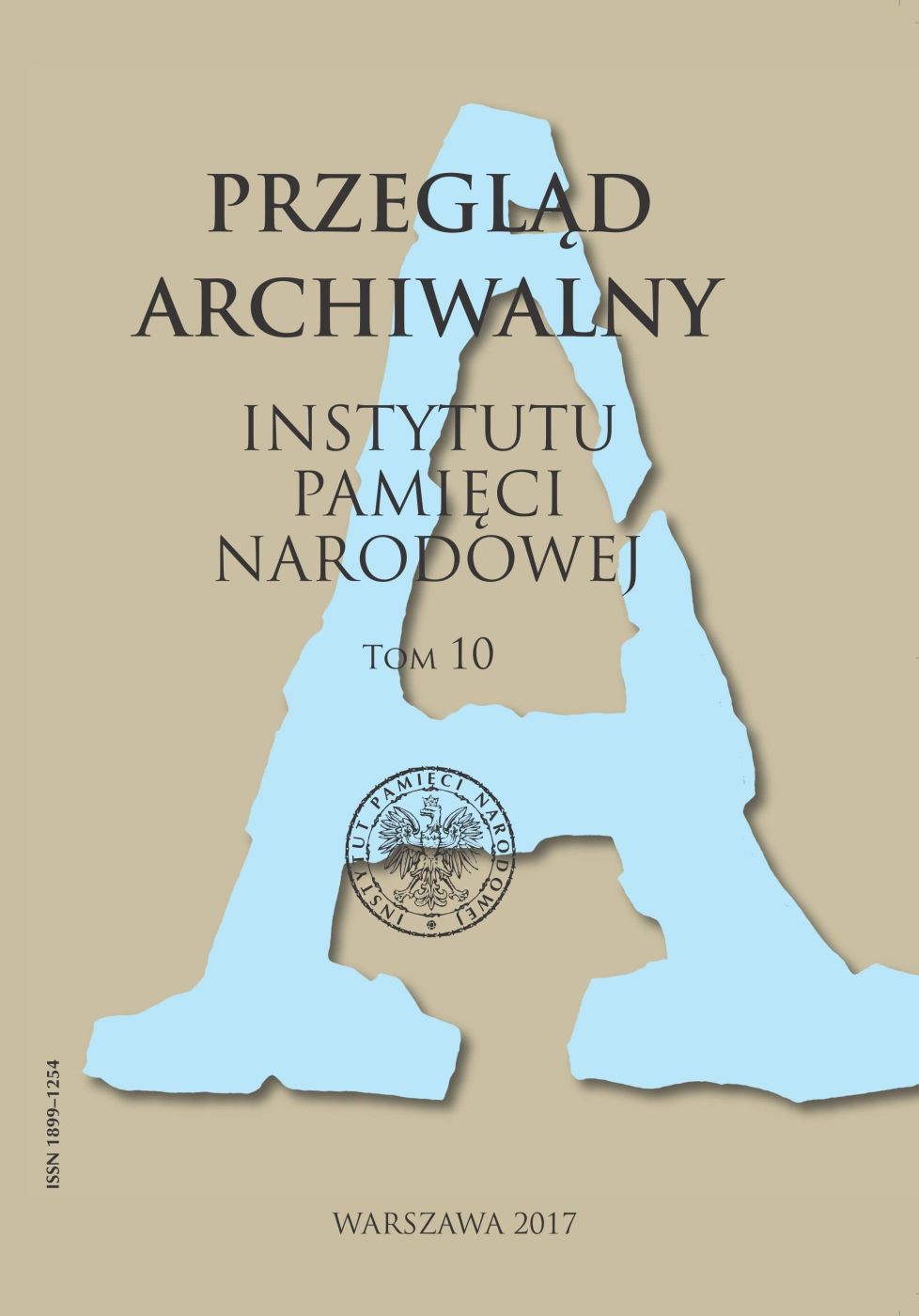Warszawska Pielgrzymka Piesza w świetle dokumentów operacyjnych Służby Bezpieczeństwa znajdujących się w zbiorach Archiwum Instytutu Pamięci Narodowej w Warszawie
Przegląd Archiwalny Instytutu Pamięci Narodowej, Nr 10 (2017), strony: 221–262
Data publikacji: 2023-04-05
Abstrakt
Warszawska Pielgrzymka Piesza do Częstochowy corocznie stanowiła wyzwanie dla władz komunistycznych w Polsce, które do jej inwigilacji i represjonowania angażowały zarówno aparat bezpieczeństwa, jak i administracyjny. MSW inspirowało i koordynowało „działania rozpoznawcze, neutralizujące i profilaktyczne”. Rutynowy zestaw podejmowanych przez SB działań stanowiły przedsięwzięcia zapobiegawcze (np. rozmowy z organizatorami, mnożenie biurokratycznych wymagań), propagandowe, a także prowokacje o charakterze dezintegracyjnym (najtrudniejsze do udowodnienia z powodu zacierania śladów i skrupulatnego niszczenia dokumentacji), a po zakończeniu pielgrzymki – represje karne i administracyjne. Do inwigilacji pielgrzymki stosowano także dostępne środki technicznego zabezpieczenia oraz osobowe źródła informacji. Szczególnie interesująca okazała się sprawa uznanej za „nielegalną” 247. Warszawskiej Pielgrzymki Pieszej w 1963 r., której zakazano pod pretekstem zwiększonej liczby zachorowań na ospę. Trzy la ta później władze komunistyczne zarządziły rekordową mobilizację w celu zabezpieczenia operacyjnego jubileuszowej 250. Warszawskiej Pielgrzymki Pieszej, wędrującej w roku milenijnym. Operację krypt. „Zorza” zabezpieczały 1723 osoby, które korzystały z 30 radiowozów, ponad 20 motocykli, 45 samochodów ciężarowych, 2 armatek wodnych i 5 wyrzutni środków chemicznych.
 Język Polski
Język Polski
 English
English


 PDF
PDF
